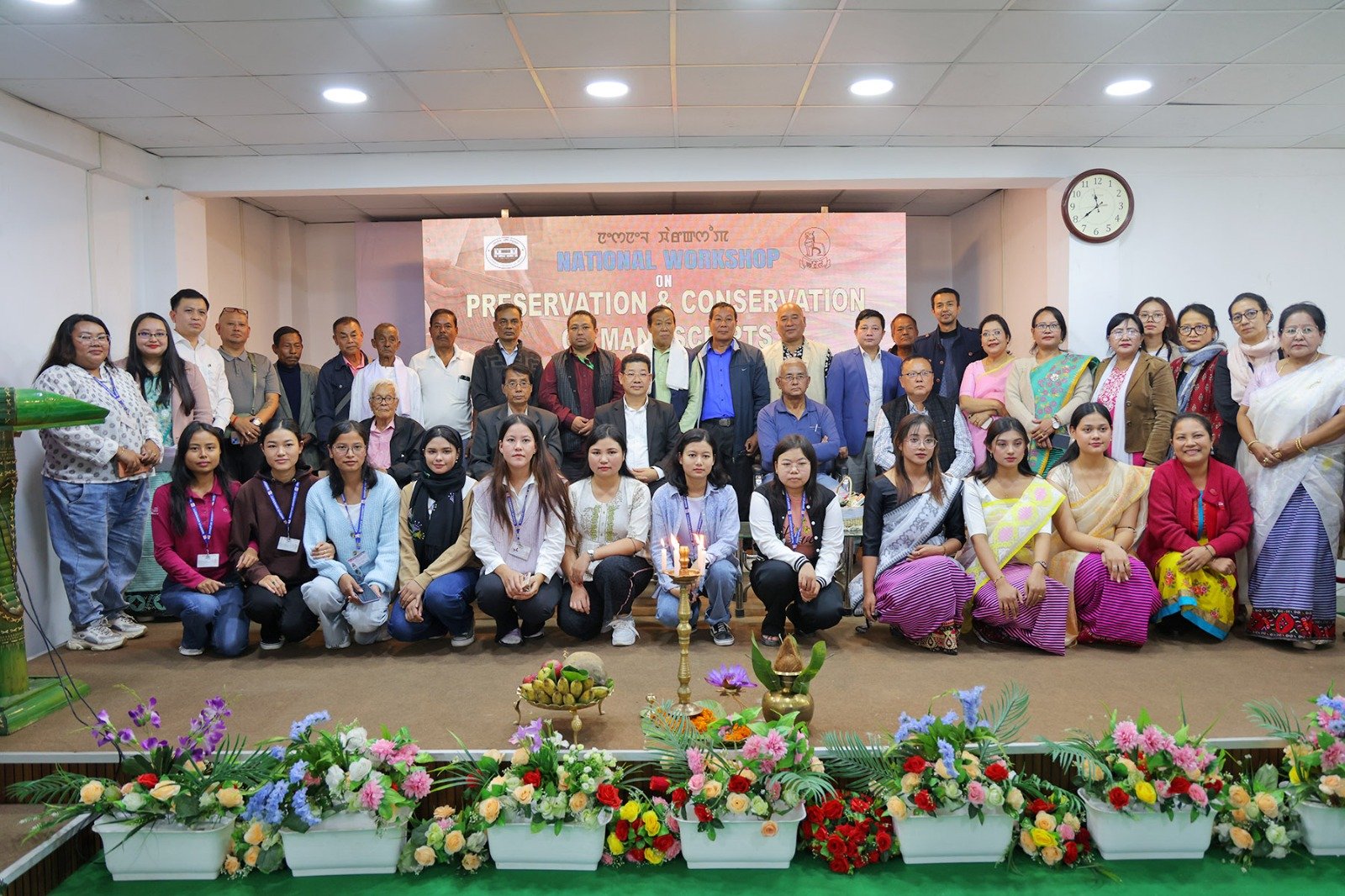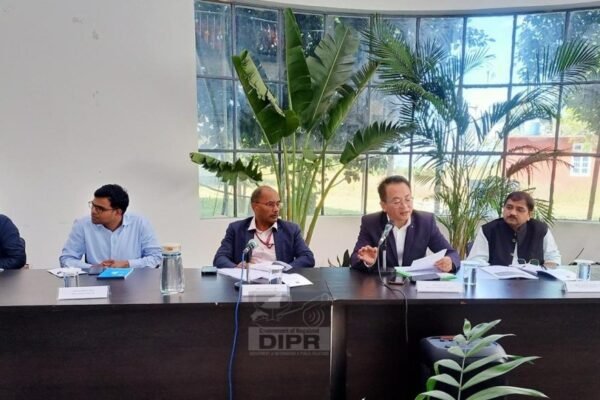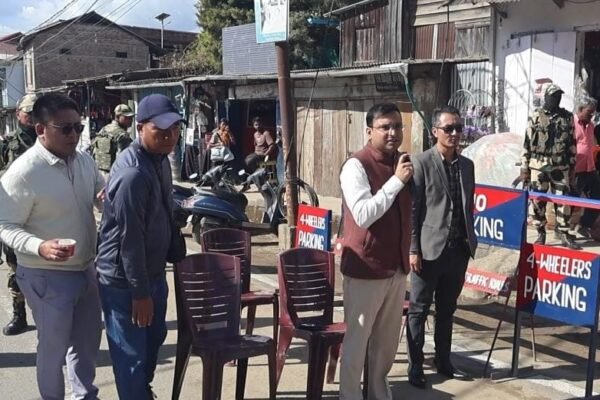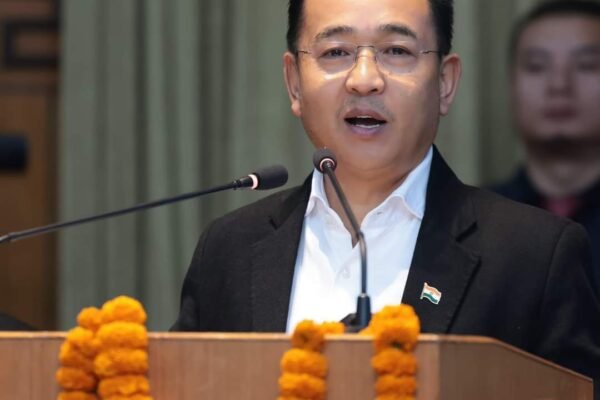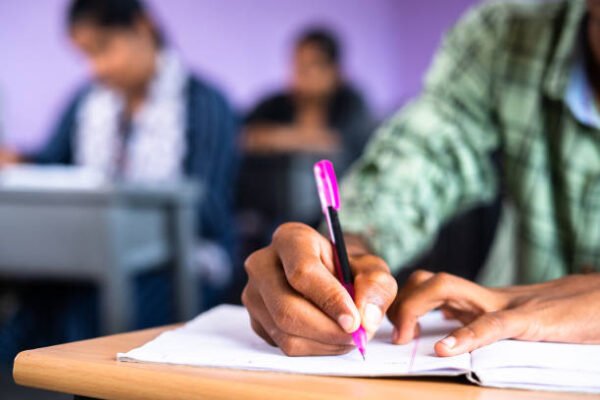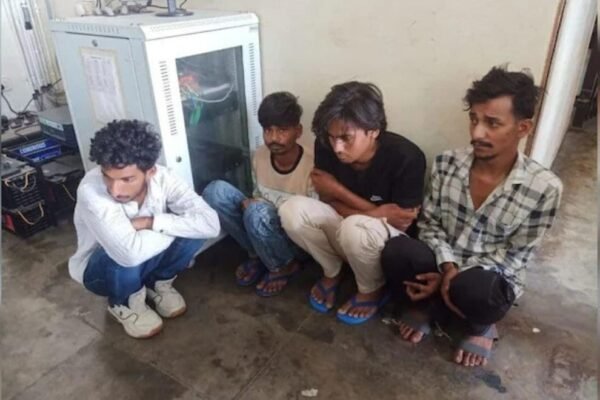A one-day workshop on manuscript conservation was held today at the State Central Library Hall, Keishampat, organised by the Directorate of Art & Culture, Government of Manipur, in collaboration with the National Archives of India (NAI), New Delhi.
Retired IAS officer and former Commissioner of Art & Culture, R.K. Nimai, attended as Chief Guest and launched a new website during the event. In his address, Nimai stressed the importance of preserving ancient manuscripts, noting that many invaluable records from the era of Maharaja Pamheiba were written on paper, bark, and cloth. He described archival materials as priceless and irreplaceable, warning that many rare documents—such as late 19th-century sketches of Kangla—are at risk of disappearing if not properly conserved.
He also raised concerns about the loss of historical authenticity, citing Tibetan and Mongolian histories as examples where much of the documentation was done by outsiders. He emphasised the need to differentiate genuine manuscripts from fake ones to ensure the integrity of historical records.
Deputy Director of NAI, Naoroibam Raju Singh, delivered a presentation on best practices in digital and physical record management in India and abroad. He also highlighted the increasing role of social media and artificial intelligence in archival development, while pointing out challenges such as colour and texture degradation in old manuscripts. He underscored the community’s responsibility in safeguarding manuscripts currently held by individuals.
Presiding over the event, K. Dinamani Singh, Director of Art & Culture, said the workshop was organised in response to concerns over the large number of manuscripts lying scattered across villages. He noted that over 5.87 lakh manuscripts have already been digitised, but many more require urgent conservation. He urged elders and custodians to permit proper handling and study of Puya manuscripts, warning that reluctance to treat them as learning materials could lead to their gradual disappearance.
During the technical sessions, P.K. Mishra, Scientific Officer at NAI, discussed strategies for manuscript preservation; Dr. Thingnam Sanjeev, Archivist at NAI, spoke on the role of the Public Records Act and the 2000 Rules in appraisal and transfer of records; Naoroibam Indramani Singh, former Microphotographist, Manipur State Archives, shared insights on traditional methods of preserving Puya; and Mutua Bahadur, Director of the Mutua Museum, spoke on preserving stone facsimiles.
The workshop concluded with an interactive session, providing a platform for participants to discuss practical and collaborative approaches to safeguarding Manipur’s rich archival heritage.
